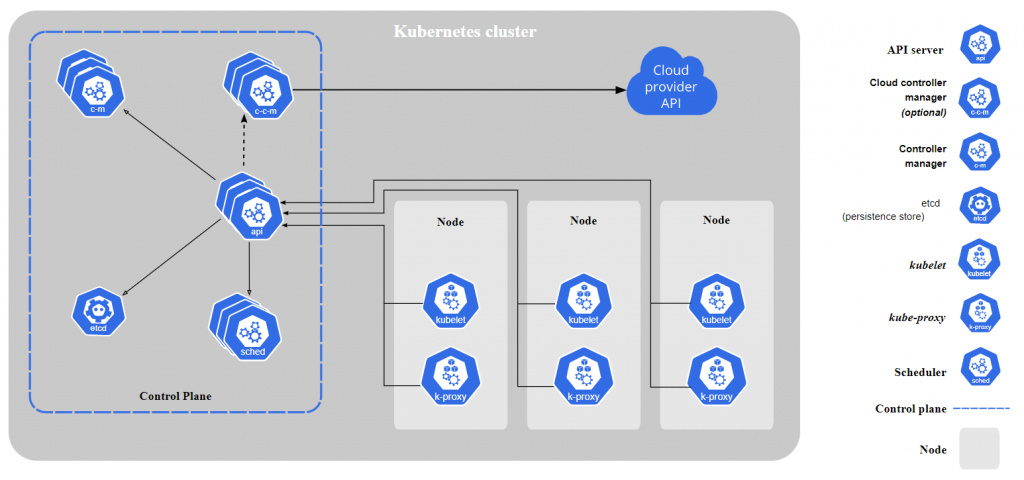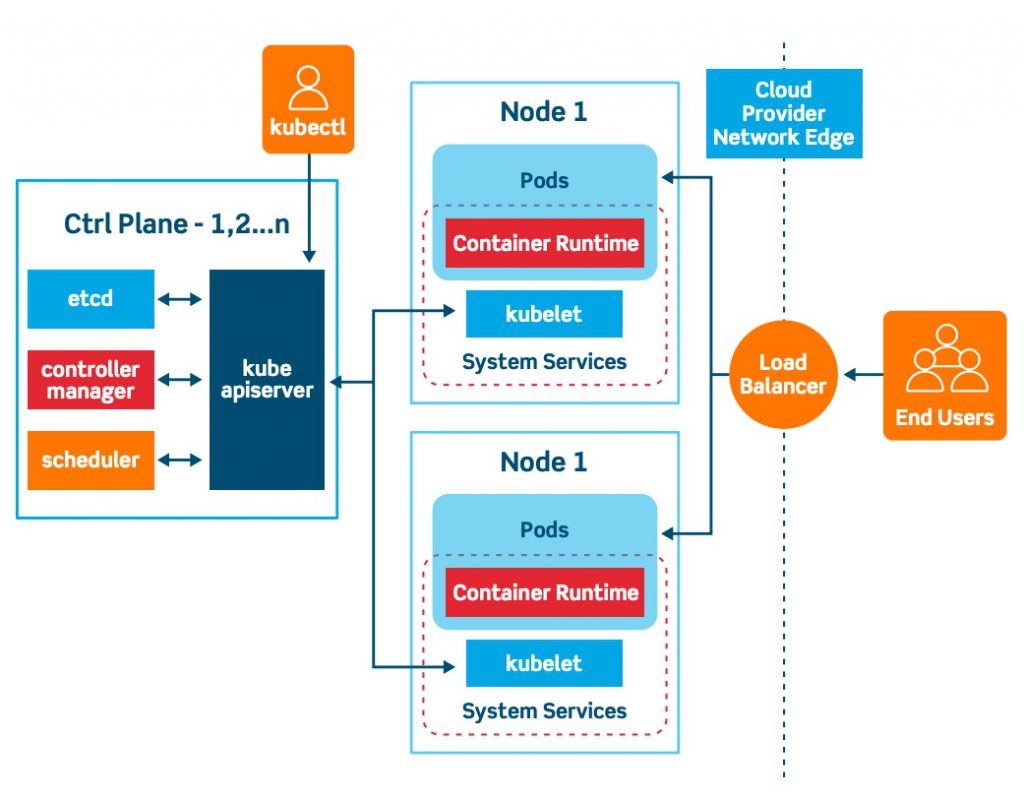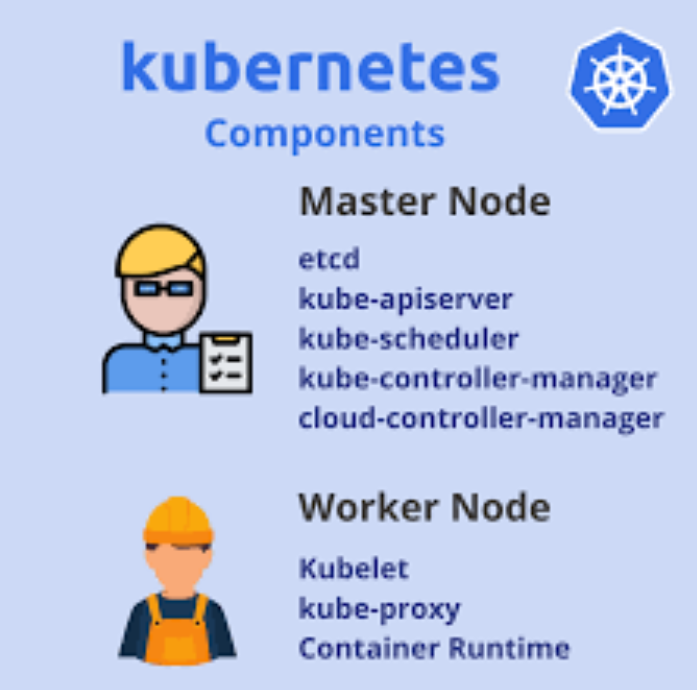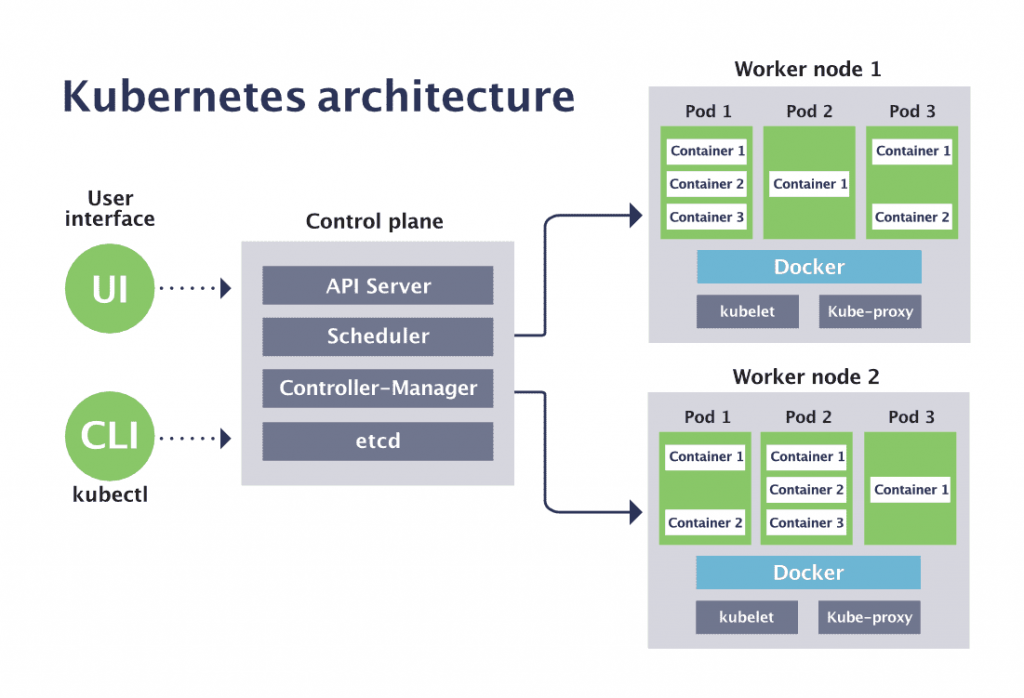



Kubernetes Cluster
A Kubernetes cluster consists of control plane, worker nodes, and pods. Control plane components are: Scheduler, ETCD, API server, and control manager. Node components are Kubelet, Kube-proxy, and container runtime.
Control Plane
The control plane’s components make global decisions about the cluster (for example, scheduling), as well as detecting and responding to cluster events (for example, starting up a new pod when a deployment’s replicas field is unsatisfied). Control plane components are: Scheduler, ETCD, API server, and control manager.
Kubectl
The kubectl command line tool lets you control Kubernetes clusters. For configuration, kubectl looks for a file named config in the $HOME/.kube directory. You can specify other kubeconfig files by setting the KUBECONFIG environment variable or by setting the –kubeconfig flag.
Kube-Controller-Manager
Kube-Controller-Manager, which runs a set of controllers for the running cluster. The controller-manager implements governance across the cluster.
API Server
The API server is a component of the Kubernetes control plane that exposes the Kubernetes API. The API server is the front end for the Kubernetes control plane.
The main implementation of a Kubernetes API server is kube-apiserver. kube-apiserver is designed to scale horizontally—that is, it scales by deploying more instances. You can run several instances of kube-apiserver and balance traffic between those instances.
Scheduler
Kube Scheduler, which schedules activities to the worker nodes based on events occurring on the etcd. It also holds the nodes resources plan to determine the proper action for the triggered event. For example the scheduler would figure out which worker node will host a newly scheduled POD
ETCD Database
etcd is a strongly consistent, distributed key-value store that provides a reliable way to store Kubernetes cluster data.
Worker Nodes
Nodes: A Kubernetes cluster needs at least one compute node, but will normally have many. Pods are scheduled and orchestrated to run on nodes. Need to scale up the capacity of your cluster? Add more nodes.
kubelet
kubelet: Each compute node contains a kubelet, a tiny application that communicates with the control plane. The kublet makes sure containers are running in a pod. When the control plane needs something to happen in a node, the kubelet executes the action.
kube-proxy
kube-proxy: Each compute node also contains kube-proxy, a network proxy for facilitating Kubernetes networking services. The kube-proxy handles network communications inside or outside of your cluster—relying either on your operating system’s packet filtering layer, or forwarding the traffic itself.
Pods
Pods: A pod is the smallest and simplest unit in the Kubernetes object model. It represents a single instance of an application. Each pod is made up of a container or a series of tightly coupled containers, along with options that govern how the containers are run. Pods can be connected to persistent storage in order to run stateful applications.
Container runtime engine
Container runtime engine: To run the containers, each compute node has a container runtime engine. Docker is one example, but Kubernetes supports other Open Container Initiative-compliant runtimes as well, such as rkt and CRI-O.
I’m a DevOps/SRE/DevSecOps/Cloud Expert passionate about sharing knowledge and experiences. I am working at Cotocus. I blog tech insights at DevOps School, travel stories at Holiday Landmark, stock market tips at Stocks Mantra, health and fitness guidance at My Medic Plus, product reviews at I reviewed , and SEO strategies at Wizbrand.
Please find my social handles as below;
Rajesh Kumar Personal Website
Rajesh Kumar at YOUTUBE
Rajesh Kumar at INSTAGRAM
Rajesh Kumar at X
Rajesh Kumar at FACEBOOK
Rajesh Kumar at LINKEDIN
Rajesh Kumar at PINTEREST
Rajesh Kumar at QUORA
Rajesh Kumar at WIZBRAND

 Starting: 1st of Every Month
Starting: 1st of Every Month  +91 8409492687
+91 8409492687  Contact@DevOpsSchool.com
Contact@DevOpsSchool.com
